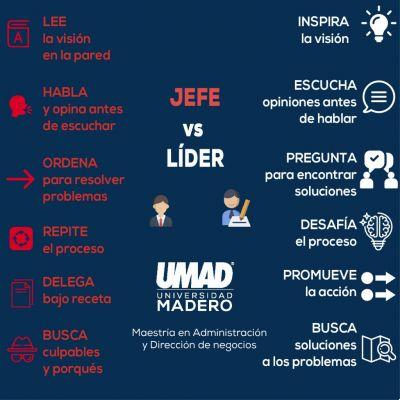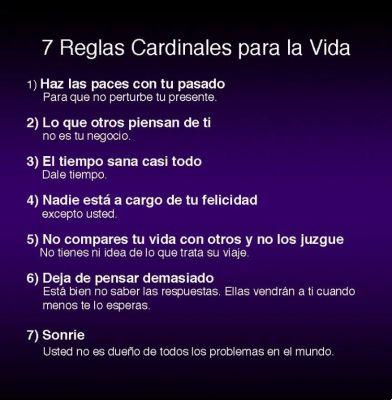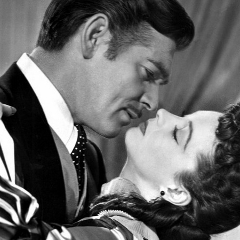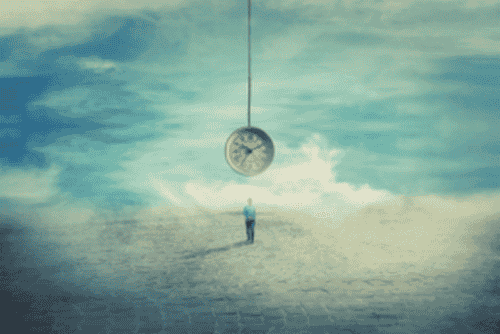There is no personal growth without change, yet changing is one of the things we find most difficult. The reason is simple: no one taught us, or rather, no one taught us how to deal with GetPersonalGrowth the 5 phases of change.
"We always have two choices in life: accept it as it is or accept responsibility for change."
Denis Waitley.
Among the phrases about change, Waitley's has always been one of my favorites.
In fact, the vast majority of people wait for the blue fairy to magically appear in their lives, take them by the hand and accompany them hopping in the Valley of fantastic dreams.
But the reality is very different.
Only when we hire ourselves 100% responsibility for the change, our life really begins to change.
Yes Andre 'oh well: you repeated this sentence 273 times! I've also tried to change, but in the end nothing has changed. You have to carry on the shack here, I understand, but listen to me: if one is born round, he cannot die square!
Taking responsibility for your own change is the first fundamental step.
But if you limit yourself to a "declaration of intent", to a promise written on the water, you actually risk dying… tonTo.
To really change we need two more ingredients:
- We have seen the first in dozens of articles, so I will spend just 3 lines on it.
- The second, on the other hand, is something we have never talked about ...
Psychology of Change: Practical Strategies for Changing Your Life
For better or worse, many of us know what they want to change in their lives.
There are those who should quit smoking, who lose a few extra pounds, who on the other hand should carry out those cursed ones University exams!
Here at GetPersonalGrowth, over the years, I've tried to provide you with dozens of practical change psychology strategies: from the best anti-procrastination techniques, to methods for eliminate bad habits, up to real fire tests like the #sfida90901.
However, there is a second element that you must take into account every time you start a path of change.
If you underestimate it, you risk finding yourself at the starting square every time, in a vicious circle worthy of a Dante's circle. Let's see what it is and how to deal with it GetPersonalGrowth.
The Emotional Cycle of Change
In the 70s, American researchers Don Kelley e Daryl Conner, they noticed that many of the individuals who had gone through voluntary change found themselves crossing 5 phases, and in each of these phases they had experienced a precise Emotional state.
Hence the name was born Emotional Cycle of Change (“Emotional Cycle of Change”), the name used for the first time by the two researchers in the 1979 Annual Handbook for Group Facilitators.
Academic aside, this "tool" can be really useful because it allows us to know in advance the obstacles we will encounter along the path of change, but above all the moods we will experience.
Knowing this gives us an incredible advantage.
"If you know the enemy and yourself, your victory is certain."
Sun Tzu.
The 5 emotions you will feel during a change
When it comes to the "ups and downs" of life, not many realize that these "peaks" and these "valleys" are much more real than we can imagine, but above all they deeply affect our days and our results.
Facing a voluntary change, we're actually starting a ride on an emotional roller coaster: if we're not ready, we're screwed.
Here, in a single image, the roller coaster that awaits you the next time you decide to change your life, establish a new habit, carry out a new project.
And guess where almost everyone gets stuck?
Yeah, in the "Valley of despair"...
But let's go in order. And above all let's see what is the mental attitude to have and the concrete actions to be carried out in the individual phases.
Phase 1: Unjustified optimism
January XNUMXst. First of the month. First day of a new project. We all know theenthusiasm to start a new path and chase a new goal.
During these first steps we are pervaded by a sense of invincibility (not very rational and completely unjustified). Everything seems possible to us and our motivation is at the highest levels.
Unfortunately, this phase does not last, but in these first few days we have the opportunity, more unique than rare, to lay the foundations for our success.
Here are specifically 2 practical actions you should take in the first few days of your change:
- Write one benefits list you expect to get from this change. Don't leave anything out. This list will help you "crystallize" your enthusiasm and will be invaluable in times of trouble.
- Roll the handbrake. Yes, you read that right: when we undertake a change we tend to overdo it and we find ourselves short of breath after a few km. Instead, start gradually, below what you think are your possibilities and focus on being consistent.
As mentioned, the unjustified optimism does not last and we soon find ourselves dealing with the second phase of the emotional cycle of change ...
Phase 2: Justified pessimism
"Quann '' o sea is calm, every strunz is seafarer."
Said Neapolitan.
After a few days (or a few weeks) from the beginning of our glorious path of change we inevitably bump into that wall called… reality.
Honeymoon over.
The difficulties we encounter along the path increase our frustration and the absence of tangible results leads us to question the commitment we have made to ourselves.
That evil voice in our brain starts whispering phrases like:
- "You are definitely doing something wrong."
- "All these sacrifices are useless."
- "Maybe there is a quicker solution."
- "What's the point of continuing?"
- "But yes, every now and then a sgarro is not the end of the world"
- "Tomorrow I swear I will!"
And with these negative thoughts in mind we enter ...
The Valley of Despair: the grave of your change (unless ...)

La valley of despair it is the imaginary place where 90% of people's attempts at change crash.
The motivation of the beginnings is now gone to be blessed. Willpower is a distant memory. The enthusiasm of the departure we don't even know what it is anymore.
Before us we see only an arid desert in which only frustrations and defeats grow.
We are ready to give up. And many do: they give up.
These people (the mollaccioni) actually spend their lives swinging like pendulums between the exaltation of a shiny new goal and the depression resulting from the difficulty of getting your hands dirty to seriously achieve this goal.
I call them the serial freaks. They always crave new projects and never finish a tuft.
Remember: only if you are able to cross the Valley of Despair will you emerge from the mass of the mediocre.
Yes André, nice words, but concretely how do I get through this desert ?!
No longer being able to rely on personal discipline alone, you have to rely on what is called "extended willpower".
This will help you to overcome the bottom of the valley, but to go up again you will need more ...
Phase 3: Encouraging Realism
As demonstrated by Kelley and Conner, individuals who overcome the phase of justified pessimism, in addition to relying on extended willpower, establish mechanisms of encouraging realism.
Ehhh ?! What are you about Andre ?!
Think about it: Why did you quit every time the going got tough in the past?
 Simple: you started walking one spiral staircase, without a glimpse of the end, but only steps that tangled on each other. The higher you looked, the more discouraged you became.
Simple: you started walking one spiral staircase, without a glimpse of the end, but only steps that tangled on each other. The higher you looked, the more discouraged you became.
"The higher you looked, the more discouraged you became."
The secret is all in this sentence. To go up the Valley of Despair we must return our gaze to the next step and only that.
Here's how to do it concretely and get to the emotional stage of encouraging realism:
- Think in terms of daily output and forget (momentarily) theoutcome. To learn more about this topic, watch this video article.
- Give yourself an expiration date. Decide in advance a date to evaluate the progress made. Sum up your path of change only on that date. Completely ignore the results you are getting before that day. Instead, focus on the individual daily actions (the output).
- Analyze and decide. Once the "due date" has arrived, evaluate your progress: if you have achieved it, scale, that is, do more than what has proven to work. If, on the other hand, the results were below your expectations, you will still have obtained valuable information that will be useful for you to try a new approach to which you will assign a new expiration date.
Being pragmatic, focusing solely on the next "step" will help you put aside pessimism and develop an attitude of hope for your change.
This third phase is the most important of all for your journey.
As you start to grind your way, staying focused on the output, your emotional state will change too, entering the fourth phase ...
Phase 4: Justified optimism

If you stay focused on individual daily actions for a long enough period (usually 90 days), you will enter the fourth phase of the emotional cycle of change: thejustified optimism.
Things will finally start going right.
Your progress will be more and more visible, you will have full confidence in the chosen path and you will know perfectly how to face any new obstacle.
Your change, however, will not yet be complete: you will have to cement the results obtained.
In what way? Help others.
You are one of the few "survivors" who has managed to overcome the Valley of Despair: if you want to strengthen your progress even more, make yourself available to those who are facing a change similar to yours.
Guide this person, encourage him in moments of greatest stalemate and difficulty, show him with your example that it is possible to achieve profound and lasting change.
In fact YOU will represent this person's extended willpower, but at the same time this person will remind you how important it is to stay focused on your goal, in order not to lose the progress made.
And so we come to the fifth and last phase of the emotional cycle of change.
Step 5: Conclusion
Celebrate your change.
When the change you promised yourself to make is finally a reality, don't make the mistake of taking it for granted: reward yourself, recognize your merits, celebrate the milestone achieved.
It is no coincidence that every human culture has its own rites of passage.
We need to communicate to our brains, in a crystalline way, that what we were able to do was great.
Only in this way will we establish that virtuous circle that will lead us to reach ever more ambitious goals.
Bottom line: what to remember about this change post
"Change is hard in the beginning, messed up in the middle and glorious in the end."
Robin Sharma.
I hope you enjoyed this article (if you like, it would be really helpful if you shared it using the social buttons at the end of the post).
I know we talked about many things and there are several aspects that you will need to explore in the other articles, but if you have to remember something from this post, remember these few elements:
- Whenever we face a voluntary change we inevitably find ourselves having to manage a emotional cycle, with very specific phases.
- Knowing them in advance allows us to deal with them GetPersonalGrowth.
- Specifically, there are 5 emotional phases that we will go through:
- Unjustified optimism. It's what we need to get started, but it never lasts and we can't be fooled. Cold blood and pedal.
- Justified pessimism. This is the hardest phase and culminates with the crossing of the Valley of Despair. 90% of people quit. If you want to be part of the 10% who make it, establish mechanisms of extended willpower.
- Encouraging realism. At this stage we build real change. Remember: output vs. outcome.
- Justified optimism. We did it, from here on it's all downhill. But in order not to lose focus, it is useful to help those who are further behind us.
- Conclusion. Don't forget to celebrate your success. A process of change needs a beginning and… a clear end.
Good. That's all for this week too: I hope I have once again provided you with the best tools to achieve your goals and continue on your personal growth path.
Daje all! GetPersonalGrowth.
Ps. Are you tired of living "years photocopy"?
Every year, on January 1st, I undertake together with 1.000 new GetPersonalGrowth readers a 365 day (per) course. Every day, I propose a small one to those enrolled in this course personal growth challenge.
These are useful challenges to stay focused on your goals and to train those muscles necessary to reach our most ambitious goals.
This course is called 365 - An Epic Year and over the years it has evolved into a real "goal-reaching kit".
If you want to know more about the new one 2022 edition and take a "peek" at the method 365 I suggest you fill out the form you see in the box below immediately and subscribe to the Waiting List.
For all those registered on the waiting list, starting from December 1st we will provide a Free PRE-course which will be disbursed for the entire month. The free pre-course is an integral part of 365 and will consist of 31 daily challenges through which I will guide you in clearly defining the person you intend to become and yours. targets for 2022.
Are you ready to make 2022 your best year ever?
Photos taken from Google Images and Shutterstock.
3K CondivisioniShareShareTweetWhatsApp

























